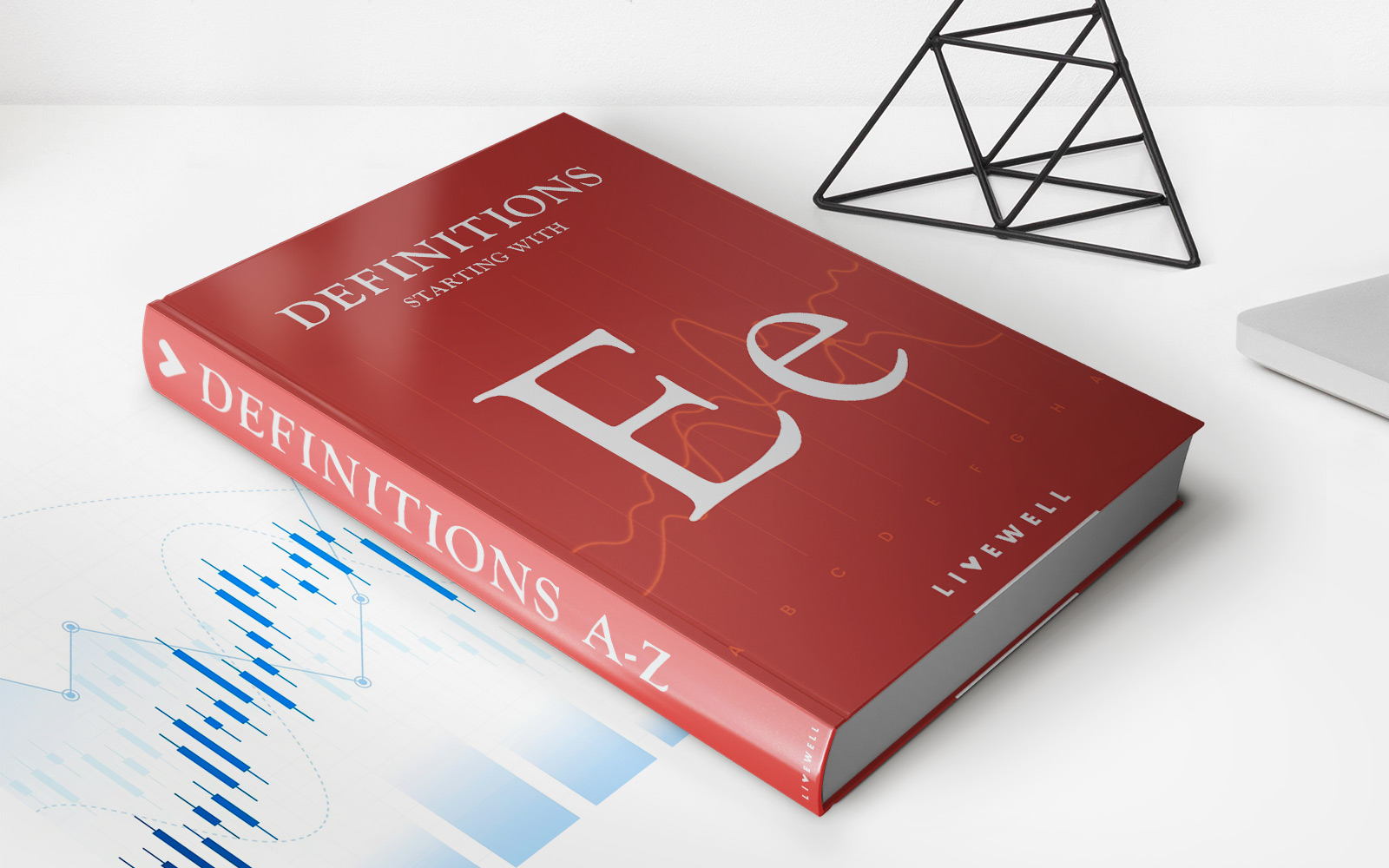

Finance
Who Pays Title Insurance?
Modified: February 21, 2024
Find out who is responsible for paying title insurance. Understand the financial implications and make informed decisions in your real estate transactions.
(Many of the links in this article redirect to a specific reviewed product. Your purchase of these products through affiliate links helps to generate commission for LiveWell, at no extra cost. Learn more)
Table of Contents
Introduction
When it comes to purchasing real estate, there are various costs and fees to consider. One essential component of the transaction is title insurance, an often-overlooked expense that can have significant financial implications for all parties involved. Understanding who pays for title insurance and why is crucial to navigating the complexities of real estate transactions.
Title insurance is a type of insurance policy that protects against financial loss due to defects in a property’s title. These defects can range from undisclosed liens, encumbrances, or competing claims to fraud, forgery, or errors in public records. Title insurance provides coverage for both the buyer and the lender, ensuring peace of mind and minimizing the risk associated with purchasing a property.
When determining who pays for title insurance, it’s important to consider the roles of the buyer, the seller, and the lender. Each party has a vested interest in the property’s title and may have specific responsibilities related to obtaining title insurance. Additionally, negotiating the payment of title insurance premiums can be an integral part of the transaction process.
In this article, we will explore the various roles and responsibilities associated with paying for title insurance. We will also discuss the costs involved and provide insights into negotiating these expenses. Whether you are a buyer, seller, or lender, understanding who pays for title insurance and why is vital to ensuring a smooth and financially secure real estate transaction.
What is Title Insurance?
Title insurance is a specialized type of insurance that protects property owners and lenders against financial loss resulting from defects in a property’s title. Unlike other forms of insurance that protect against future events, title insurance focuses on past events and provides coverage for issues that may have occurred before the property was purchased.
When a property is purchased, a thorough examination of its title history is conducted to ensure that the title is clean and free from any defects or claims. This process is known as a title search. However, even with meticulous research, certain problems may go unnoticed, such as undisclosed liens, forged documents, or errors in public records.
This is where title insurance comes into play. It acts as a safeguard, protecting the buyer and the lender from financial loss if any title issues arise after the purchase is complete. The insurance policy covers legal fees, settlement costs, and any potential losses resulting from a defect in the title.
There are two types of title insurance: owner’s title insurance and lender’s title insurance.
Owner’s title insurance is typically purchased by the buyer and provides coverage for the full purchase price of the property. It protects the buyer’s equity in the property and offers peace of mind, knowing that their investment is secure. Owner’s title insurance remains in effect for as long as the buyer or their heirs own the property.
Lender’s title insurance, on the other hand, is usually required by the lender to protect their investment. It covers the outstanding loan amount and remains in effect until the mortgage is paid off. Lender’s title insurance ensures that the lender has a valid and enforceable lien against the property.
Both owner’s and lender’s title insurance policies are typically issued at the time of closing and involve a one-time premium payment. The cost of title insurance varies depending on the purchase price of the property, the location, and the insurance company.
In the next section, we will explore the roles of different parties involved in a real estate transaction and how they contribute to the payment of title insurance.
The Role of the Buyer
As the purchaser of a property, the buyer plays a crucial role in the title insurance process. It is typically the buyer’s responsibility to obtain owner’s title insurance, ensuring that their investment is protected.
Before closing on a property, the buyer has the right to request a title search to examine the property’s title history and identify any potential issues. This is usually performed by a title insurance company or an attorney specializing in real estate transactions.
If any defects or claims are discovered during the title search, the buyer can work with the seller to resolve these issues before completing the purchase. Alternatively, the buyer may decide to walk away from the deal if the title issues pose significant risks or financial burdens.
Once the buyer is satisfied with the title search results and is ready to proceed with the purchase, they will typically purchase owner’s title insurance. The buyer can choose the title insurance company, as long as the insurer is licensed in the state where the property is located. The buyer will pay a one-time premium for the owner’s title insurance policy.
Owner’s title insurance provides protection to the buyer against any title defects or claims that may arise after the purchase has been finalized. If an issue arises, the owner’s title insurance policy will cover legal expenses, settlement costs, and any losses incurred as a result of the defect. This policy remains in effect for as long as the buyer or their heirs own the property.
It’s important to note that while owner’s title insurance is not legally required in most states, obtaining this coverage is highly recommended. Without owner’s title insurance, the buyer could be financially responsible for resolving any title defects that may arise in the future, which could potentially result in significant costs and legal complications.
Now let’s explore the role of the seller in the title insurance process and their potential obligations.
The Role of the Seller
In a real estate transaction, the seller has specific responsibilities related to the title insurance process. Although the buyer typically bears the cost of purchasing owner’s title insurance, the seller may have obligations when it comes to providing a clear and marketable title.
As the seller, one of your primary responsibilities is to ensure that the title to the property is free from any liens, encumbrances, or other defects. Before listing the property for sale, it is advisable to conduct a preliminary title search to identify any potential issues that may affect the sale.
If any defects or claims are discovered during the preliminary title search, the seller should take steps to resolve these issues before proceeding with the sale. This may involve paying off outstanding liens, obtaining lien releases, or resolving legal disputes that could cloud the title.
The seller might also need to provide certain documentation to assist in the title insurance process. This may include copies of the property’s deed, mortgage documents, survey reports, and any relevant legal agreements or easements. These documents help establish a clear chain of ownership and provide necessary information for the title insurance company to underwrite the policy.
As part of the closing process, the seller will typically be required to sign a document called a deed, transferring ownership of the property to the buyer. The seller may also be required to sign an affidavit or other legal documents confirming that they have acted in good faith and have disclosed any known defects or issues with the title.
Although the seller is not typically responsible for purchasing title insurance for the buyer, some real estate transactions may involve negotiation regarding the payment of owner’s title insurance premiums. In some cases, the seller may agree to cover a portion or all of the title insurance costs as part of the sales agreement.
It’s important for the seller to communicate openly with the buyer and their real estate agent or attorney regarding any known title issues. Transparency and cooperation can help facilitate a smooth and successful real estate transaction for all parties involved.
Now let’s explore the role of the lender in the title insurance process and their requirements.
The Role of the Lender
When financing a real estate purchase, the lender has a significant role in the title insurance process. Lenders typically require the borrower to obtain lender’s title insurance, also known as a loan policy, to protect their interests in the property.
The lender’s title insurance policy is distinct from the owner’s title insurance policy. While the owner’s title insurance protects the buyer’s equity in the property, the lender’s title insurance safeguards the lender’s investment in the event of a title defect.
Before approving a mortgage loan, lenders often require a title search and examination to ensure that the property has a clear and marketable title. They want to confirm that there are no outstanding liens or other claims that could jeopardize their security interest in the property.
Once the title examination is complete and any issues are resolved, the lender will require the borrower to purchase a lender’s title insurance policy. The borrower is responsible for the cost of this policy, which protects the lender’s loan amount.
Lender’s title insurance remains in effect until the mortgage is paid off or refinanced. It provides coverage for the lender’s interest in the property during the loan term and protects against any undiscovered title defects that may arise.
If a title claim arises and the lender suffers financially as a result, the lender’s title insurance policy will cover the costs associated with defending the claim or resolving any title issues. This ensures that the lender’s investment in the property is secure.
It’s worth noting that lender’s title insurance only protects the lender’s interests and does not extend any coverage to the buyer or owner of the property. As such, it is generally recommended for buyers to also obtain owner’s title insurance to protect their own investment and ownership rights.
In some cases, the lender may negotiate with the buyer or seller regarding the payment of the lender’s title insurance premium. This can vary depending on the state and local practices, as well as the terms of the loan agreement.
Now that we have explored the roles of the buyer, seller, and lender in the title insurance process, let’s delve into exceptions and additional coverage that can be obtained through title insurance policies.
Exceptions and Additional Coverage
While title insurance provides significant protection against defects in a property’s title, it’s important to understand that there are certain exceptions and limitations to coverage. These exceptions are typically outlined in the title insurance policy and may vary depending on the specific circumstances and the insurance company.
Common exceptions to title insurance coverage include issues such as zoning violations, encroachments, boundary disputes, and environmental hazards. These types of risks may require additional coverage or specific endorsements to address the potential financial impact on the property owner.
In addition to the standard coverage offered by title insurance policies, there are optional coverages that can be obtained for an additional premium. These coverages provide enhanced protection and peace of mind for property owners.
One common additional coverage is a survey-related endorsement, which provides protection against survey-related issues that may arise after the property is purchased. This includes discrepancies or conflicts regarding boundary lines, encroachments, or easements.
Another important coverage is for mechanics’ liens or construction-related issues. This protects property owners from claims by contractors or suppliers who have not been paid for work done on the property.
Some title insurance policies also offer coverage for identity theft or fraud, which protects against unauthorized mortgages or other fraudulent activities that may impact the title of the property.
It’s important to review the title insurance policy carefully and discuss with the insurance provider to ensure that appropriate coverage is in place and any additional endorsements are considered if needed.
While title insurance provides crucial protection, it’s worth noting that it is not a guarantee against all possible title issues. It is designed to mitigate risk, but it’s still advisable for property owners to be diligent and proactive in understanding and addressing any potential title concerns.
In the next section, we will discuss the costs associated with title insurance and who typically bears the financial responsibility.
Costs and Premiums
When it comes to title insurance, there are costs and premiums involved that need to be considered by buyers, sellers, and lenders. The cost of title insurance can vary depending on factors such as the purchase price of the property, the location, and the insurance company.
The premium for owner’s title insurance is typically a one-time payment made by the buyer at the time of closing. The premium is often based on a percentage of the purchase price of the property. On average, it can range from 0.5% to 1% of the purchase price.
For example, if the purchase price of a property is $300,000, the owner’s title insurance premium could range from $1,500 to $3,000. It’s essential to consider this cost as part of the overall expenses associated with buying a property.
Similarly, the lender’s title insurance premium is also a one-time payment, usually paid by the borrower. The cost of the lender’s title insurance is typically lower than the owner’s premium and is based on the loan amount. The lender may require the borrower to obtain a certain level of coverage to protect their investment.
It’s important to note that the cost of title insurance does not include other closing costs, such as appraisal fees, attorney fees, or recording fees. These costs are separate and should be factored into the overall budget for the real estate transaction.
In certain cases, the buyer and seller may negotiate who will bear the responsibility for paying the title insurance premiums. This negotiation often takes place during the offer and acceptance phase of the transaction. It’s important for both parties to discuss and understand their obligations regarding title insurance to avoid any misunderstandings or disputes later on.
It’s worth mentioning that title insurance premiums are regulated by state insurance departments, so the rates may vary from state to state. It’s advisable to work with a reputable title insurance company or seek guidance from a real estate professional or attorney to ensure that the costs and premiums are fair and appropriate for the transaction.
Next, let’s explore who typically pays for title insurance in real estate transactions and how these payments can be negotiated.
Who Typically Pays for Title Insurance?
In real estate transactions, the responsibility for paying title insurance premiums can vary depending on several factors, including local customs and negotiations between the buyer and seller. However, there are common practices that can help clarify who typically pays for title insurance in different scenarios.
Owner’s Title Insurance: In most cases, it is customary for the buyer to pay for owner’s title insurance. The buyer wants to protect their investment in the property and ensure that they have a clear and marketable title. The cost of the owner’s title insurance premium is often considered a part of the buyer’s closing costs.
Lender’s Title Insurance: Lender’s title insurance, on the other hand, is typically paid by the borrower. Since the lender is extending a mortgage loan to the buyer, they want to ensure that their investment is protected in case of any unforeseen title issues. The cost of the lender’s title insurance premium is usually included in the closing costs associated with obtaining the mortgage.
In some cases, the buyer and seller may negotiate who will be responsible for paying the title insurance premiums. This negotiation can take place during the offer and acceptance phase of the transaction. For example, the seller may agree to pay for a portion or all of the owner’s title insurance as an incentive to close the deal. Alternatively, the buyer may request that the seller cover a part of the closing costs, including the title insurance premium.
It’s important for both parties to clearly communicate and reach a mutual agreement about the payment of title insurance premiums before finalizing the transaction. These discussions should be documented in the purchase agreement or contract to avoid any confusion or disputes later on.
Regardless of who pays for title insurance, it’s important to understand that the coverage provided by title insurance benefits both the buyer and the lender. It ensures a smooth transfer of ownership and minimizes the risk of financial loss due to title defects or claims.
It’s always a good idea to consult with a real estate professional or attorney who can provide guidance and ensure that the payment responsibilities for title insurance are clearly outlined and understood by all parties involved.
Now, let’s look at some strategies for negotiating title insurance payments in real estate transactions.
Negotiating Title Insurance Payments
When it comes to paying for title insurance in real estate transactions, there is often room for negotiation between the buyer and seller. Here are some strategies for negotiating title insurance payments:
1. Understand Local Customs and Practices: It’s important to familiarize yourself with the local customs and practices regarding who typically pays for title insurance in your area. This can help set realistic expectations and guide your negotiation strategy.
2. Review the Purchase Agreement: The purchase agreement is a crucial document that outlines the terms and conditions of the transaction. It’s essential to review the agreement carefully to determine whether the responsibility for paying title insurance premiums is specified or open for negotiation.
3. Consider Closing Costs: Title insurance is just one of the many closing costs associated with a real estate transaction. It’s crucial to consider the overall closing costs and discuss with the other party how these costs can be allocated. This includes not only title insurance but also appraisal fees, attorney fees, and other expenses related to the closing process.
4. Assess the Market Conditions: The state of the real estate market can also influence the negotiation process. In a seller’s market, where there is high demand for properties, buyers may have less leverage to negotiate payment responsibilities. Conversely, in a buyer’s market, where there are more properties available, buyers may have more room to negotiate, including the payment of title insurance premiums.
5. Trade-Offs and Concessions: Negotiation is a give-and-take process. Consider what you are willing to offer or compromise on in exchange for the other party covering the title insurance costs. This could include adjusting the purchase price, agreeing to certain repair obligations, or offering other incentives to achieve a mutually beneficial agreement.
6. Seek Professional Advice: It’s always advisable to seek guidance from a real estate professional or attorney who can provide expert advice on negotiating title insurance payments. They can help you understand your rights, responsibilities, and options, ensuring that the negotiation process is fair and transparent.
Remember, open communication and a willingness to find common ground are key to successful negotiations. Both the buyer and seller should approach the negotiation process with a clear understanding of their objectives and a desire to achieve a mutually beneficial outcome.
Now, let’s conclude our discussion on title insurance payments.
Conclusion
Understanding who pays for title insurance and why is essential when navigating the complexities of real estate transactions. Title insurance provides protection against defects in a property’s title, ensuring that both the buyer and lender are safeguarded from financial loss.
The buyer typically bears the responsibility for obtaining owner’s title insurance, while the lender requires the borrower to obtain lender’s title insurance. Both policies involve a one-time premium payment, which is based on factors such as the purchase price and loan amount.
The seller plays a crucial role in providing a clear and marketable title, resolving any issues, and disclosing known defects. Although the seller is not typically responsible for purchasing title insurance for the buyer, negotiations regarding payment can take place as part of the sales agreement.
While title insurance provides significant protection, there are exceptions and additional coverages to consider. Common exceptions to coverage include zoning violations, encroachments, and environmental hazards. Additional coverage can be obtained through endorsements to address specific risks or concerns.
In real estate transactions, the payment of title insurance premiums can be negotiated between the buyer and seller. Understanding local customs and practices, reviewing the purchase agreement, and considering other closing costs are important factors to consider in the negotiation process.
Seeking guidance from real estate professionals or attorneys can provide valuable insights and ensure a fair negotiation regarding title insurance payments.
Ultimately, regardless of who pays for title insurance, all parties involved benefit from the protection it provides. Title insurance offers peace of mind, mitigates financial risks, and contributes to a smooth and secure real estate transaction.
By understanding the roles, responsibilities, and negotiation strategies surrounding title insurance, buyers, sellers, and lenders can make informed decisions and confidently navigate the complexities of property ownership.














